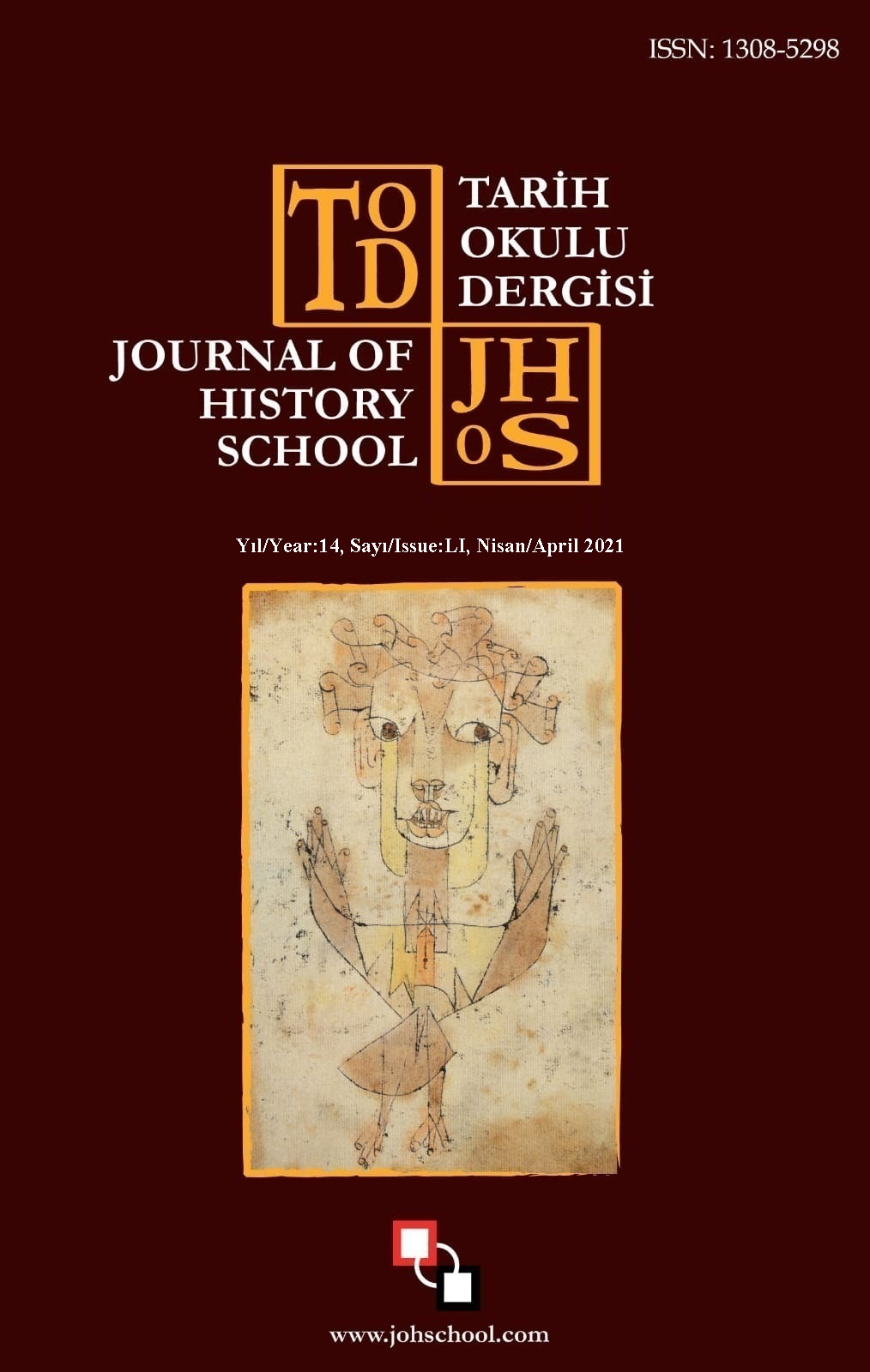Author :
Abstract
Mehmed Ali Pasha problem took place between 1831 and 1839. In spite of the big ambitions of the governor of Egypt, Mehmed Ali Pasha who wanted to give the house of Osman an end, the two military defeats (1832 Konya and 1839 Nizip) did not finish off the Empire. At this point a question comes to mind: what saved the Empire that had already become militarily vulnerable from a certain collapse. The answer is simple: diplomacy. Most accounts of the Ottoman diplomacy of that era have always been one sided and Eurocentric due to some "orientalist" biases and prejudices. According to these narratives, after suffering some military defeats, Mahmud II and his diplomats just watched the diplomatic manoeuvres of the European powers in Ottoman lands and waited for the end without having any diplomatic plans and manoeuvres. They also portray Lord Palmerston as the sole architect of the 1840 Treaty of London that compensated the two military defeats and that prolonged the Empire for another century. However when we examine the instructions in Ottoman documents given by the Emperor to his diplomats residing in many European capitals and their efforts to follow them, it will be seen what kind of a role Mahmud II and his diplomats played in this diplomatic achievement. After a short introduction to the course of the institutional reforms in Ottoman diplomacy from Selim III to Mahmud II periods, this article focuses on the Empire's diplomatic manoeuvres prior to the Battle of Nizip that was itself an effort to bring the diplomatic campaign initiated by the Emperor and his men to a successful end.
Keywords
Abstract
Mehmed Ali Paşa Problemi 1831-1839 yılları arasında meydana gelmiştir. Osmanlı hanedanına son vermek isteyen Mısır Valisi Mehmed Ali Paşa’nın büyük hırslarına rağmen iki ağır askeri mağlubiyet (1832 Konya ve 1839 Nizip) Osmanlı İmparatorluğunun sonunu getirmemiştir. Bu aşamada askeri olarak korumasız bir hale gelen İmparatorluğun hayatını kurtaran etken ne olmuştur sorusu akla geliyor. Bunun cevabı çok basit bir şekilde karşımızda durmaktadır: Diplomasi. Lakin Osmanlı İmparatorluğunun kurtuluşuna sebep olan bu diplomasi hikayesinin anlatımı ise Oryantalist bakış açısının beraberinde getirdiği ön yargılar dolayısıyla hep tek taraflı, batılı devletler merkezli, yapılagelmiştir. Bu anlatıma göre II. Mahmud ve diplomatları aldıkları askeri mağlubiyetlerden sonra kendi topraklarında probleme müdahil olmuş Avrupalı devletlerin diplomatik manevralarını sözüm ona sanki pasif bir güç gibi izlemiş, hiçbir diplomatik manevraya ve plana sahip olmadan tabiri caizse kurbanlık koyun gibi sonlarını beklemişlerdir. Ya da bu iki büyük askeri mağlubiyeti diplomasi yoluyla telafi etmiş ve Osmanlı İmparatorlu’nun yaklaşık bir yüzyıl daha yaşamasına sebep olmuş 1840 yılında imzalanmış Londra Antlaşmasının tek mimarı meşhur İngiltere Dışişleri Bakanı Lord Palmerstone olarak gösterilmiştir. Halbuki; II Mahmud’un Avrupa’nın birçok başkentinde görevlendirdiği diplomatlarına verdiği direktifler ve bu direktiflerin bu yetenekli diplomatlar tarafından bütün zor şartlara rağmen uygulanma çalışmaları Osmanlı belgelerine dayanarak bütün ayrıntıları ile incelenirse, bu büyük diplomatik başarıda II. Mahmud ve Osmanlı diplomatlarının ortaya koydukları diplomatik mücadele ile az veya çok ne kadar paya sahip olduğu görülecektir. Bu çalışmamızda, bahsi geçen yıllarda ortaya konan diplomatik manevraların altyapısının daha iyi anlaşılması için önce kısaca belli bir oranda III. Selim’in ağırlıklı olarak da II. Mahmud’un Osmanlı Diplomasisinin Kurumsal yapısında meydan getirdikleri reform süreci özetle anlatıldıktan sonra, II. Mahmud ve Osmanlı diplomatlarının 1832 yılından beri ortaya koydukları diplomasi mücadelelerini başarılı bir şekilde nihayete erdirme gayreti olan Nizip Muharebesinden önceki son diplomatik manevraları bütün ayrıntıları ile mercek alınmaya çalışılmıştır.
Keywords
- Charmley, J. (2002). Palmerston: artful dodger or babe of grace. T.G. Otte (Ed.), in The Makers of British Foreign Policy (p.75-97). Palgrave Macmillan.
- Demirbas, S. (2015). The treaty of balta limanı’s role in anglo-ottoman relations during the Mehmet Ali problem. Journal of History School,8(24), 233-251.
- Demirbaş, S. (2016). A new perspective on the treaty of unkiar skelessi mahmud II’s use of international diplomacy to resolve the mehmet ali problem, Eskişehir Osmangazi Üniversitesi Sosyal Bilimler Dergisi, 17(2), 1-16.
- Findley, C.V. (2014). Osmanlı İmparatorluğu’nda Bürokratik Reform. Tarih Vakfı Yurt Yayınları.
- Findley, C.V. (1972). The foundation of the Ottoman foreign ministry: The beginnings of bureaucratic reform under Selim III and Mahmud II. International Journal of Middle East Studies, 3(4), 388-416.
- Findley, C.V. (1970). The legacy of tradition to reform: Origins of the ottoman foreign ministry. International Journal of Middle East Studies, 1(4), 334357.
- Ortaylı, İ. (2009). İmparatorluğun En Uzun Yüzyılı. Timaş Yayınları.
- Turan, N.S. (2014). İmparatorluk ve Diplomasi. İstanbul Bilgi Üniversitesi Yayınları.
- Webster, C. (1951). The Foreign Policy of Palmerston: 1830-1841: Britain, The Liberal Movement and The Eastern Question, Vol. I. G. Bell and Sons.
- Zürcher, E.J. (2009). Modernleşen Türkiye’nin Tarihi. İletişim Yayıncılık. EXTENDED ABSTRACT





